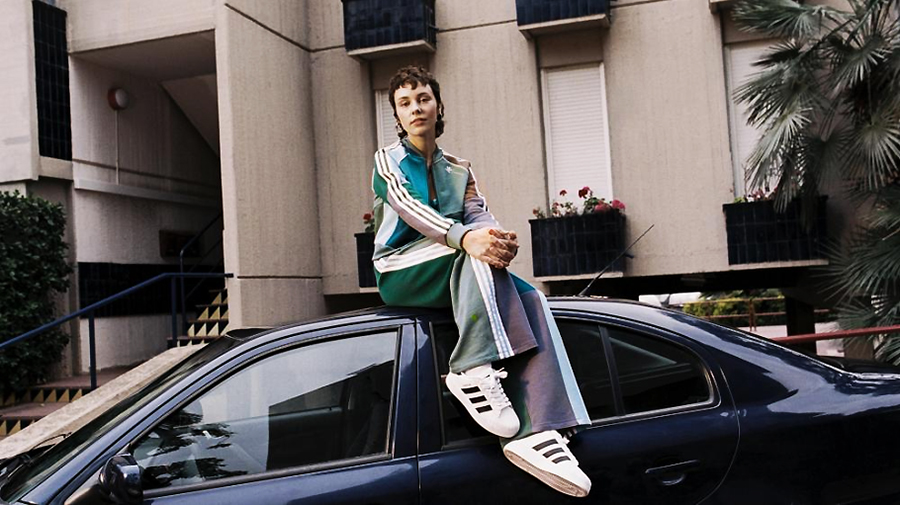Adidas raised its earnings outlook for the year, reiterating the raise announced on July 24, in part because of demand for the company’s inventory of its discontinued Yeezy merchandise (read SGB Media’s coverage here). The brand was boosted by the margin benefit from reduced inventory levels in the marketplace and China’s continuing recovery.
Adidas now expects to post a €450 million ($491 million) operating loss in 2023, a much better outcome than the €700 million ($764 million) loss it had forecast back in March. The company said sales would also fall by less than originally expected.
Adidas also reported second-quarter results that showed improvement and were in line with expectations.
Sales in the quarter were flat, reflecting improved sell-out trends and a conservative sell-in strategy. Gross margins in the quarter were up 60 basis points to 50.9 percent, reflecting strong improvement sequentially compared to Q1 due to better sell-through and less discounting.
Operating profits in the quarter were down 55.1 percent due in large part to the liquidation of leftover Yeezy merchandise that included donations, but the overall quarter was well ahead of expectations with a boost from Yeezy sales. Inventory levels improved substantially versus Q1 level to €5.5 billion, now up only 1 percent year-over-year
Adidas CEO Bjørn Gulden, said, “We are happy with the way the second quarter developed. The core Adidas business was slightly better than we expected. Although we still have too much slow-moving inventory in the market, sell-through has been improving. We also saw gross margin in our core business improving strongly compared to the first quarter. The operating profit of €176 million was substantially higher than our initial plans. The sale of the first part of the Yeezy inventory did of course help both our top and bottom line in the quarter.
“The market is still very volatile, and we continue to see a lot of uncertainty for the rest of the year. As there is still a lot of inventory in the market, retailers are very cautious in their preorders.
“We believe that when we start to see larger volumes of our hot sellers in the Terrace area like Samba and Gazelle hitting the markets, we will continue to see Adidas brand heat improving. This will support the sell-through of all Adidas products in the market.
“Our story is the same as we said at the beginning of the year: We are using 2023 to clean inventories, work on future products, improve the way we work, build better partnerships, and lay the foundation for a better 2024 and a good and profitable Adidas in 2025 and 2026. 2023 is not about trying to show short-term results.
“We will continue to carefully sell off more of the existing Yeezy inventory. This is much better than destroying and writing off the inventory and allows us to make substantial donations to organizations like the Anti-Defamation League, the Philonise & Keeta Floyd Institute for Social Change and Robert Kraft’s Foundation to Combat Antisemitism. And it is of course also helping both our cash flow and general financial strength.”
When asked on a conference call with analysts if the company would consider going back to the well to produce more Yeezy product, Gulden was quick to lay the idea to rest.
“To take designs and sell them off later, which technically we could do, is not part of our strategy,” said Gulden on the Thursday call. “Our task is to limit the damage, get rid of the inventory and then build the business later without Yeezy.”
Second Quarter 2023
Currency-neutral revenues on prior-year levels
In the second quarter of 2023, currency-neutral revenues were flat versus the prior-year level. The top-line development continued to be impacted by the company’s conservative selling approach in order to reduce high inventory levels, particularly in North America and Greater China. At the same time, Adidas’ second-quarter revenues benefited from the first sale of some of its Yeezy inventory. The initial product drop in June generated revenues of around €400 million in Q2, which is largely in line with the Yeezy sales generated in the prior year’s quarter.
Footwear revenues grew 1 percent during the quarter, reflecting strong growth in football, basketball, tennis and U.S. sports. Apparel sales declined 3 percent in the second quarter. As the apparel market continues to be particularly overstocked, the company continued its conservative sell-in strategy to improve sell-through and margins in the medium term. Accessories grew 8 percent during the quarter driven by growth in football.
Lifestyle revenues were down during the quarter despite extraordinary demand for the company’s Samba, Gazelle and Campus franchises. While Adidas slowly started to scale its offering for these product families during the second quarter, the total volume still only represents a small portion of the company’s overall business. Sales in the Adidas Performance categories continued to show positive momentum. This reflects strong demand for new product introductions such as the latest iterations of its Predator, X and Copa football boots, as well as jerseys for both the FIFA Women’s World Cup 2023 and the company’s unique portfolio of football teams ahead of the start of the European club season. In addition, the Adizero product family in running continued to gain a lot of attention around marathon races across the world, translating into higher demand. At the same time, the brand’s Barricade tennis franchise grew strongly, leveraging the excitement around major tournaments.
In euro terms, the company’s revenues declined 5 percent to €5.34 billion in the second quarter (2022: €5.60 billion).
Stronger sell-out trends and conservative sell-in
As a result of the company’s initiatives to reduce high inventory levels, currency-neutral sales in wholesale declined 10 percent despite double-digit growth in Greater China and Latin America. At the same time, direct-to-consumer (DTC) revenues grew 16 percent versus the prior year. This development was driven by strong growth in both the company’s e-commerce business (+14 percent) and own retail stores (+19 percent), reflecting continued strong sell-out trends across most regions. The outperformance of the company’s DTC channel versus the wholesale business was also related to the first sale of the Yeezy inventory, which was done exclusively through Adidas’ own e-commerce channel
Double-digit growth in Greater China and Latin America
Currency-neutral sales in North America declined 16 percent during the quarter. The region is particularly affected by elevated inventory levels in the market and – in response to this – the company’s significantly reduced sell-in. Revenues in Greater China grew 16 percent in Q2, reflecting double-digit sell-out growth in both wholesale and own retail. Sales in EMEA were down slightly (-1 percent) despite double-digit DTC growth. While the company’s initiatives to reduce inventory levels and discounting weighed on the overall top-line development in the region, Adidas recorded significantly improving full-price trends during the quarter. Revenues in Asia-Pacific increased 7 percent during the quarter, driven by strong double-digit growth in DTC. Latin America continued to increase at a double-digit rate (+30 percent), reflecting strong growth in both wholesale and DTC.
Gross margin improves to 50.9 percent
The company’s second-quarter gross margin increased 0.6 percentage points to 50.9 percent (2022: 50.3 percent). This improvement was mainly driven by price increases the company has implemented as well as by an improved channel mix. At the same time, higher supply chain costs and unfavorable currency movements continued to strongly weigh on the gross margin development. While still adversely impacting the company’s gross margin in the quarter, discounting levels significantly improved compared to the first quarter of the year.
Operating profit of €176 million, resulting in an operating margin of 3.3 percent
Other operating expenses were up 3 percent to €2.582 billion (2022: €2.501 billion). As a percentage of sales, other operating expenses increased 3.6 percentage points to 48.3 percent (2022: 44.7 percent). Marketing and point-of-sale expenses decreased 7 percent to €617 million (2022: €663 million). As a percentage of sales, marketing and point-of-sale expenses slightly decreased by 0.3 percentage points to 11.5 percent (2022: 11.8 percent). Operating overhead expenses were up 7 percent to €1.965 billion (2022: €1.838 billion), reflecting higher logistics expenses. In addition, the company recorded one-off costs of around €50 million related to the strategic review the company is currently conducting as well as donations and accruals for further donations in an amount of around €110 million. As a percentage of sales, operating overhead expenses increased 3.9 percentage points to 36.8 percent (2022: 32.8 percent). The company’s operating profit amounted to €176 million (2022: €392 million) in the quarter. This amount includes the extraordinary expenses of in total around €160 million reflecting the one-off costs related to the strategic review as well as the donations and accruals for further donations. The sale of the Yeezy product positively impacted Adidas’ operating profit by an incremental amount of around €150 million in Q2. The operating margin reached 3.3 percent in the quarter (2022: 7.0 percent).
Net income from continuing operations of €96 million
After taxes, the company’s net income from continuing operations amounted to €96 million (2022: €360 million), while basic EPS from continuing operations decreased to €0.48 (2022: €1.88).
First Half Year
Currency-neutral revenues on the prior-year level in the first half of 2023
In the first half of 2023, currency-neutral revenues were flat versus the prior-year period. In euro terms, revenues decreased 3 percent to €10.617 billion in the first six months of 2023 (2022: €10.897 billion). While sell-out trends improved throughout the period, the company continued with its conservative sell-in strategy. The discontinuation of the regular Yeezy business represented a drag of around €400 million on the year-over-year comparison during the first half of the year. The first sale of some of the company’s remaining Yeezy inventory positively impacted net sales in the amount of around €400 million in the second quarter of 2023, which was largely in line with the prior year’s quarter. At the same time, however, there were no Yeezy revenues in the first quarter of 2023, while the company generated around €400 million in Yeezy sales in Q1 2022. As a result, the company’s Yeezy revenues reached around €400 million in H1 2023 compared to a total of around €800 million in the prior year period.
The company’s gross margin declined 2.3 percentage points to 47.9 percent (2022: 50.1 percent) during the first half of the year. The development improved significantly between the first and the second quarter, partly driven by better sell-through and improving discounting levels. Higher supply chain costs, negative currency developments, higher inventory allowances, as well as promotional activity weighed on the gross margin development during the six-month period. At the same time, price increases benefited the gross margin in H1. Other operating expenses increased 4 percent to €4.949 billion (2022: €4.759 billion) in the first half of the year. During this period, the company recorded one-off costs of around €70 million related to the strategic review the company is currently conducting as well as donations and accruals for further donations in an amount of around €110 million. As a percentage of sales, other operating expenses were up 2.9 percentage points to 46.6 percent (2022: 43.7 percent). Adidas generated an operating profit of €236 million (2022: €828 million) during the first six months of the year. The initial sale of the Yeezy product in Q2 positively impacted Adidas’ operating profit by an incremental amount of around €150 million during the first half of the year. At the same time, the company’s operating profit includes extraordinary expenses of in total around €180 million reflecting the one-off costs related to the strategic review as well as the donations and accruals for further donations. The operating margin reached 2.2 percent (2022: 7.6 percent) in H1. Net income from continuing operations was €73 million (2022: €671 million). Basic and diluted earnings per share from continuing operations declined to €0.29 (2022: €3.47).
Inventories nearly at the prior-year level, operating working capital increases
Inventories continued to improve substantially during the second quarter. Year-over-year, inventories were up only 1 percent to €5.540 billion (2022: €5.483 billion). On a currency-neutral basis, inventories grew 6 percent compared to the prior year. Inventory units were down 11 percent compared to the prior year, reflecting the strong progress the company has made in improving its inventory position. During the first six months of the year, the company’s inventory level declined by more than €400 million as a result of Adidas’ initiatives around inventory management, including significantly reducing buying volumes and tactically repurposing existing inventory. Operating working capital was up 14 percent to €5.896 billion (2022: €5.191 billion). On a currency-neutral basis, operating working capital grew 22 percent. Average operating working capital as a percentage of sales increased to 27.1 percent (2022: 21.0 percent). This development reflects a significant decrease of receivables as a result of the company’s conservative sell-in approach as well as a strong double-digit decrease in payables due to lower sourcing volumes in line with the company’s activities to reduce elevated inventory levels.
Adjusted net borrowings of €6.039 billion
Adjusted net borrowings at June 30, 2023, amounted to €6.039 billion (June 30, 2022: €4.673 billion), representing a year-over-year increase of 29 percent. The decline in lease liabilities was more than offset by a significant increase in short- and long-term borrowings as well as a decrease in cash and cash equivalents.
2023 Outlook
Adidas expects revenues to decline at a mid-single-digit rate
On July 24, Adidas adjusted its full-year financial guidance to reflect the positive impact of the first sale of some of its Yeezy inventory and a slightly better-than-expected development of the Adidas business in the first half of the year. At the same time, macroeconomic challenges and geopolitical tensions persist. Elevated recession risks in North America and Europe as well as uncertainty around the recovery in Greater China continue to exist. In addition, the company’s revenue development will continue to be impacted by the initiatives to significantly reduce high inventory levels. As a result, Adidas now expects currency-neutral revenues to decline at a mid-single-digit rate in 2023 (previously: decline at a high-single-digit rate).
Underlying operating profit anticipated to be around the break-even level
The company’s underlying operating profit – excluding any one-offs related to Yeezy and the ongoing strategic review – is still anticipated to be around the break-even level. Including the positive impact from the first Yeezy drop of around €150 million, the potential write-off of the remaining Yeezy inventory of now €400 million (previously: €500 million) and one-off costs related to the strategic review of up to €200 million (unchanged), the company now expects to report an operating loss of €450 million in 2023 (previously: loss of €700 million).
On August 2, the company launched a second drop of Yeezy inventory. Throughout the month of August, Adidas is making a range of existing products available through both its own e-commerce channel as well as the digital platforms of selected wholesale partners. If successful, this second drop would further improve the company’s results. However, as the results of this drop are yet unknown, it is not accounted for in the company’s current top- and bottom-line outlook for 2023.
Photo courtesy Adidas
















